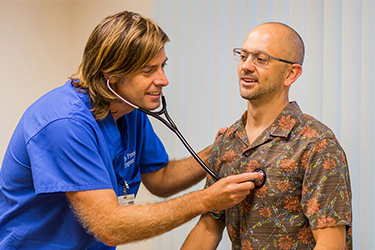Osteotomy refers to a procedure that reshapes a bone by dividing and shifting it into better alignment. Pelvic osteotomy is used to treat hip dysplasia.
There are several different types of pelvic osteotomy; your surgeon will determine which is right for you depending on the shape of the joint socket.
Osteotomy on the socket side of the hip is called “acetabular osteotomy.” When it is performed on the ball side of the hip, it is called “femoral osteotomy.”
Sometimes, osteotomy is recommended on both the socket and the ball side of the hip.
Peri-acetabular osteotomy (PAO) is the most common procedure performed in adolescents and adults for hip dysplasia after maturity.
Surgery involves cutting the pelvis around the hip joint and then shifting the hip into a better position. The hip is then held in place with screws until the bone heals, after which the screws can be removed (though this step is not usually necessary).
Types of pelvic osteotomy include:
- Dega and Pemberton Osteotomies – Hinges the socket down over the head of the femur (thighbone) when the socket is too wide and too shallow. Can help restore the worn-down area of a shallow socket.
- Salter (Innominate) Osteotomy – Performed when the socket doesn’t sit on top of the ball at the top of the hip joint. The pelvic bone is cut with a saw, and the entire socket is rotated into a better position on top of the femoral head after the hip is reduced into the socket.
- Double or Triple Innominate Osteotomy – Performed on older children or pre-adolescents when the pelvic growth plate is still open (meaning it is still growing) in order to reorient the socket.
- PAO or Bernese/Ganz pelvic Osteotomy – Performed after skeletal maturity to reorient the shallow socket to improve the stability and coverage of the hip joint.
Types of femoral osteotomy include:
- Varus Osteotomy – Done when the upper end of the femur needs to be tipped so the ball points deeper into the socket. Often, the thigh bone will need to be shortened to reduce the risk of re-dislocation and risk of damage to the growth centers of the hip.
- Valgus Osteotomy – Corrects congenital deformity of the femur to improve weight-bearing or to reorient the weight-bearing surfaces away from damaged cartilage.
- Flexion or Extension Osteotomy – Corrects deformities caused by abnormal growth or slippage of the epiphysis. Also performed to reorient the weight-bearing surface away from damaged cartilage and dead bone, such as osteonecrosis.
- Combined Osteotomy – More commonly performed in children older than 18 months. A bigger procedure, but corrects all elements of hip dysplasia through surgery. However, this procedure should not be the first choice when less-invasive methods are available.
Due to the complexity of this operation, osteotomy is usually performed in medical centers that specialize in this procedure and perform it on a regular basis.
Risks and Complications
- Infection.
- Blood loss requiring transfusion.
- Growth disturbance leading to leg length difference or recurrent deformity in children.
- Blood clots in the veins of the calf or thigh in adults.
- Incomplete healing of the bone or nonunion of bone.
- Nerve injury leading to numbness, weakness, or paralysis.
- Heterotopic bone formation or contracture about the joint.
- Continued cartilage degeneration and future arthrosis requiring more surgery or joint replacement surgery.


